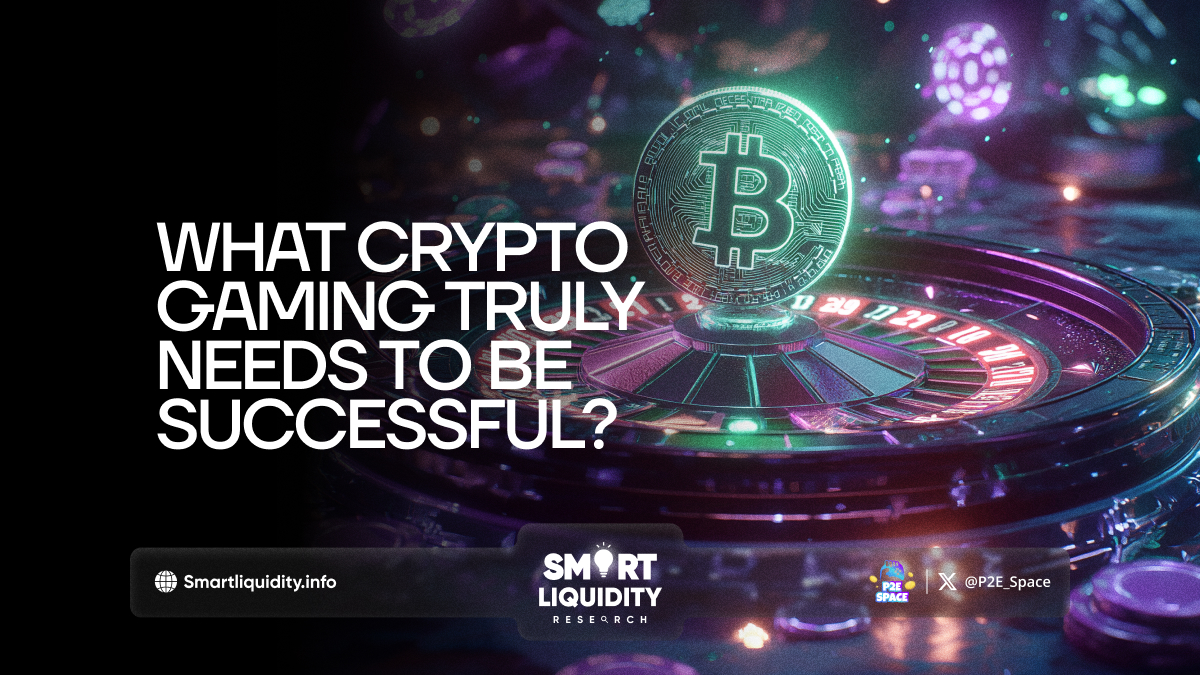What Crypto Gaming Truly Needs to Be Successful?


The world of crypto gaming is booming, but success isn’t just about launching another play-to-earn (P2E) title. Many games have come and gone, leaving players with mixed experiences and developers struggling to sustain their projects. So, what does crypto gaming truly need to thrive? Let’s dive deep into the essential elements that can shape the future of blockchain-based games.
1. Compelling Gameplay First, Blockchain Second
Many crypto games focus too much on tokenomics and not enough on creating engaging gameplay. A game should be fun and immersive, whether or not blockchain technology is involved. Successful games like Axie Infinity and Gods Unchained gained traction because of their interactive mechanics, not just their earning potential. Without solid gameplay, even the best token models will eventually fail.
2. Balanced and Sustainable Economy
P2E models often suffer from inflation, leading to token devaluation and player loss. For sustainability, crypto games must design circular economies where assets retain value and new players aren’t just paying for older players to cash out. A mix of in-game utility, deflationary mechanisms, and real-world demand is crucial.
3. Interoperability & Cross-Chain Support
Blockchain gaming should break the walls between ecosystems. The ability to move assets across chains and use them in multiple games enhances utility and expands opportunities for gamers. Projects like Immutable X and Ronin are already pushing toward this, but more games need to adopt cross-chain compatibility.
4. User-Friendly Onboarding
The biggest barrier to mainstream adoption is the complexity of crypto wallets, gas fees, and security concerns. Crypto gaming should offer seamless onboarding, allowing users to play without needing a deep understanding of blockchain. Integrations with custodial wallets, fiat on-ramps, and gasless transactions will make it easier for traditional gamers to jump in.
5. Community-Driven Ecosystem
A game is only as strong as its community. Players should feel a sense of ownership through governance mechanisms, DAO-based decision-making, and in-game content creation opportunities. When users have a say in the game’s development, engagement skyrockets, leading to a more sustainable model.
6. Security & Anti-Cheat Measures
Blockchain brings transparency, but it also opens doors for exploits. Hacks, rug pulls, and cheating mechanisms (like botting and multi-account farming) damage trust. To succeed, crypto games need to implement strict anti-cheat solutions, regular smart contract audits, and transparent development roadmaps.
7. Quality Partnerships & Collaborations
Building a strong network of partners can enhance credibility and exposure. From collaborating with established gaming studios to integrating with DeFi protocols, strategic alliances help projects scale. Companies like Animoca Brands have set the bar by backing high-quality blockchain games that deliver real value.
8. True Ownership & Utility of NFTs
NFTs should be more than just collectibles. They should offer in-game benefits, staking opportunities, and real-world integrations. Games that provide evolving NFTs—where assets can be upgraded, bred, or customized—create long-term engagement rather than speculative hype.
9. Regulatory Compliance & Transparency
As governments tighten regulations around crypto, games must ensure compliance with financial laws. Clear communication, proper KYC measures, and legal transparency will prevent future issues and keep investors and players confident in the project.
10. Strong Marketing & Player Education
A great game without the right marketing will fade into obscurity. Crypto gaming projects need to invest in clear messaging, engaging social media strategies, and influencer collaborations. Educating players about blockchain benefits, security risks, and game mechanics will increase adoption and trust.
Final Thoughts
Crypto gaming is still in its infancy, but the potential is undeniable. By focusing on gameplay, sustainability, community, and innovation, blockchain games can move beyond short-lived hype and build long-term success. The future belongs to projects that blend traditional gaming excellence with the advantages of Web3.
REQUEST AN ARTICLE
Disclaimer: This article is for informational purposes only and should not be considered financial advice. Always conduct your own research before investing in any crypto or blockchain-based projects.




